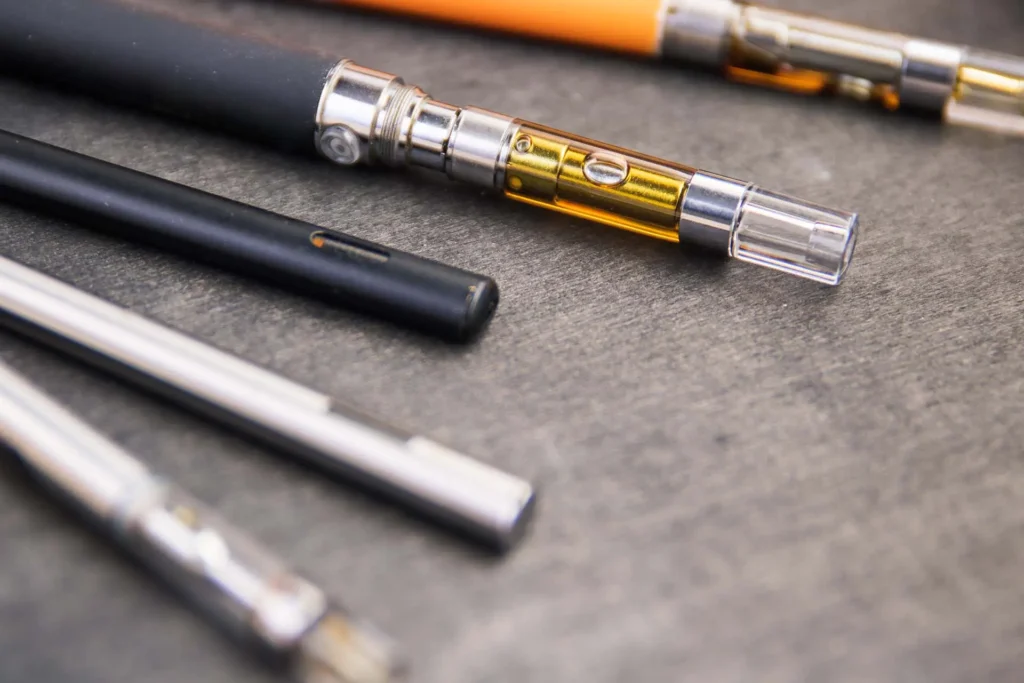Are fake vape pens safe?

The rapid rise of vaping has brought about a surge in the market for electronic cigarettes and vape pens. However, amidst the plethora of legitimate products, there exists a shadowy market of counterfeit vape pens that pose serious risks to consumers.
The Dangers of Fake Vape Pens: Unmasking the Risks and Ensuring Safety
In this article, we will explore the dangers associated with fake vape pens, the reasons behind their prevalence, and how consumers can protect themselves.
1. The Proliferation of Fake Vape Pens:
The popularity of vaping has made it an attractive target for counterfeiters looking to capitalize on the demand for these products. Fake vape pens are often produced with substandard materials and lack the quality control measures employed by reputable manufacturers. These counterfeits can be found in various channels, from online marketplaces to unauthorized retailers, making it challenging for consumers to distinguish between genuine and fake products.
2. Hidden Dangers in Counterfeit Vape Pens:
A. Unknown Ingredients:
One of the most significant risks associated with fake vape pens lies in the uncertainty of their ingredients. Legitimate manufacturers adhere to strict standards and use high-quality components, including pharmaceutical-grade nicotine and food-grade flavorings. Counterfeit pens, on the other hand, may contain harmful substances such as heavy metals, pesticides, and other toxic chemicals. Inhaling these unknown compounds can have serious health consequences, ranging from respiratory issues to long-term health complications.
B. Battery Safety Concerns:
Counterfeit vape pens often compromise on the quality of their batteries, using cheap alternatives that lack the necessary safety features. Low-quality batteries can overheat, explode, or catch fire, posing a significant risk to users. Authentic vape pens undergo rigorous testing to ensure the safety of their batteries, but counterfeits may not adhere to these standards, putting consumers in harm’s way.
C. Lack of Quality Control:
Reputable vape pen manufacturers implement stringent quality control measures to guarantee the safety and consistency of their products. Counterfeiters, however, prioritize cost-cutting over quality, leading to inconsistencies in manufacturing. This lack of quality control can result in leaks, malfunctions, and other issues that compromise the overall safety and performance of fake vape pens.
3. Health Implications:
A. Respiratory Issues:
Inhaling the unknown and potentially harmful substances present in counterfeit vape pens can lead to various respiratory problems. Users may experience shortness of breath, coughing, and other symptoms indicative of compromised lung function. The long-term effects of inhaling these substances are still not fully understood, but emerging evidence suggests a link between counterfeit vape use and severe respiratory conditions.
B. Nicotine Poisoning:
Nicotine is a highly addictive substance found in many vape pens, and fake products may contain inconsistent or dangerously high levels. Users of counterfeit pens are at an increased risk of nicotine poisoning, which can manifest as nausea, vomiting, increased heart rate, and, in severe cases, seizures. The lack of accurate labeling on fake products makes it difficult for users to gauge their nicotine intake, further amplifying the risks.
C. Increased Likelihood of Substance Abuse:
The accessibility of fake vape pens, often sold at lower prices, increases the likelihood of substance abuse among vulnerable populations, including youth. Counterfeit products may appeal to those seeking a cheaper alternative, unaware of the potential health hazards they pose. Addressing the issue of fake vape pens is crucial in curbing the spread of these products and protecting public health.
4. Protecting Yourself from Fake Vape Pens:
A. Purchase from Reputable Retailers:
To minimize the risk of purchasing counterfeit vape pens, consumers should stick to authorized retailers and reputable online sellers. Avoid buying products from unknown sources or those offering prices significantly lower than market averages.
B. Check for Authenticity:
Some legitimate vape pen manufacturers incorporate authentication features on their products, such as unique serial numbers or QR codes. Before purchasing a vape pen, consumers should verify its authenticity through the manufacturer’s official website or customer service channels.
C. Educate Yourself:
Being informed about the characteristics of genuine vape pens can help consumers identify potential counterfeits. Familiarize yourself with the packaging, labeling, and overall design of reputable brands to make informed purchasing decisions.
Conclusion:
The dangers associated with fake vape pens highlight the urgent need for increased awareness, regulatory measures, and consumer education. As the vaping industry continues to evolve, it is crucial for individuals to prioritize their safety by purchasing from reputable sources and staying informed about the potential risks associated with counterfeit products. By addressing the issue at its root, we can collectively work towards creating a safer vaping landscape for all consumers.
